Corporate Governance for Banks in Southeast Europe: Policy - IFC
Corporate Governance for Banks in Southeast Europe: Policy - IFC
Corporate Governance for Banks in Southeast Europe: Policy - IFC
You also want an ePaper? Increase the reach of your titles
YUMPU automatically turns print PDFs into web optimized ePapers that Google loves.
RomaniaIn Romania, Regulation No. 18/2009 requires the establishment of board-level audit committees responsible<strong>for</strong> support<strong>in</strong>g the board <strong>in</strong> “fulfill<strong>in</strong>g its <strong>in</strong>ternal audit duties.” Accord<strong>in</strong>g to the regulation, “auditcommittees shall be comprised, <strong>in</strong> majority, of members of the bodies hav<strong>in</strong>g supervisory functions thatare <strong>in</strong>dependent of management—under a unitary board structure—and have a firm understand<strong>in</strong>g ofthe role of this committee <strong>in</strong> the <strong>in</strong>ternal audit function.” Directors’ <strong>in</strong>dependence is still a major issue <strong>in</strong>Romania, because the Companies Act (Law No. 31/1990, as revised) provides this requirement as optionaland not mandatory. To cover this gap, the Bucharest Stock Exchange <strong>Corporate</strong> <strong>Governance</strong> Code stronglyrecommends that: “An adequate number of non-executive directors shall be <strong>in</strong>dependent....” (Pr<strong>in</strong>ciple VII).SerbiaIn Serbia, bank<strong>in</strong>g regulation requires that at least one-third of members of the board of a bank shall be<strong>in</strong>dependent of the bank. A person not hold<strong>in</strong>g direct or <strong>in</strong>direct ownership <strong>in</strong> the bank or <strong>in</strong> the bank<strong>in</strong>ggroup is considered <strong>in</strong>dependent.Source: Data from EBRD, <strong>Corporate</strong> <strong>Governance</strong> Assessment of <strong>Banks</strong> (2010–2011).Subsidiary boardsS<strong>in</strong>ce the bank<strong>in</strong>g sector <strong>in</strong> SEE is dom<strong>in</strong>ated by <strong>for</strong>eign banks (see Table 2, above, <strong>for</strong> levels of <strong>for</strong>eignownership), questions arise regard<strong>in</strong>g the governance of cross-border groups and, <strong>in</strong> particular, requirements<strong>for</strong> <strong>in</strong>dependent board members <strong>in</strong> subsidiaries. Another important issue is the presence of subsidiary boardmembers with local experience.In practice, wholly owned <strong>for</strong>eign bank subsidiaries have boards that are dom<strong>in</strong>ated by <strong>in</strong>siders. Such boardsmay, <strong>for</strong> example, consist of seven people, five of whom are executives from the parent bank, with the localchairperson be<strong>in</strong>g the chief executive officer or deputy chief executive officer of the parent bank. In addition,there may be two nom<strong>in</strong>ally <strong>in</strong>dependent people, or external members of the board.In all jurisdictions <strong>in</strong> the region boards of subsidiaries are held to the same <strong>in</strong>dependence requirements astheir parents. Some parties argue that this is not appropriate.However, SEE subsidiary boards could stand to be strengthened. There is a view that both subsidiaryboards and subsidiary board committees (<strong>in</strong> particular, the audit committee) need to have some level of<strong>in</strong>dependence. Independence on subsidiary boards is expected to protect local stakeholders and enhance thegovernance function <strong>for</strong> the parent. 28 In addition, subsidiary boards are expected to benefit from the presenceof board members with local expertise.The costs of better governance always need to be considered <strong>in</strong> conjunction with the anticipated benefits. Toavoid excessive burdens, there could be a requirement <strong>for</strong> systemically important banks, to have <strong>in</strong>dependentboard members, <strong>in</strong>dependent audit committees, and local board members. (A further discussion of groupstructures is found <strong>in</strong> Section III.A.7, below.)28 In particular, the Basel Committee’s Pr<strong>in</strong>ciples <strong>for</strong> enhanc<strong>in</strong>g corporate governance (2010) states, “The board of a regulated bank<strong>in</strong>gsubsidiary should reta<strong>in</strong> and set its own corporate governance responsibilities, and should evaluate any group-level decisions or practicesto ensure that they do not put the regulated subsidiary <strong>in</strong> breach of applicable legal or regulatory provisions or prudential rules. Inorder to exercise its corporate governance responsibilities <strong>in</strong>dependently, the board of the subsidiary is expected to have an adequatenumber of qualified, <strong>in</strong>dependent non-executive board members, who devote sufficient time to the matters of the subsidiary.”20<strong>Policy</strong> Brief<strong>Corporate</strong> <strong>Governance</strong> <strong>for</strong> <strong>Banks</strong> <strong>in</strong> <strong>Southeast</strong> <strong>Europe</strong>


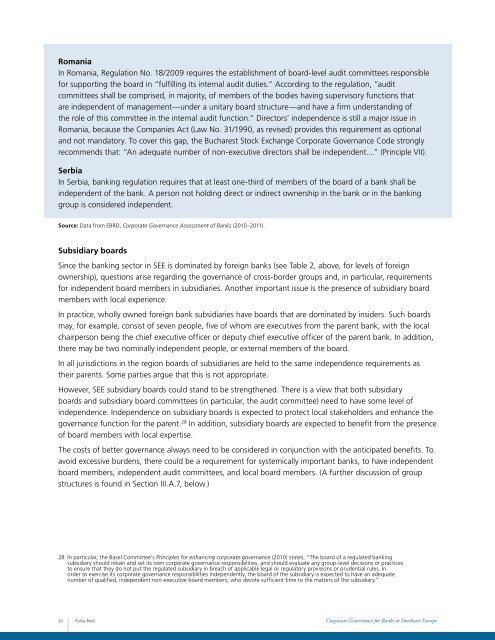
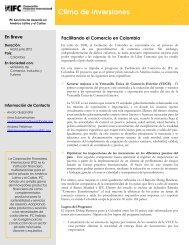
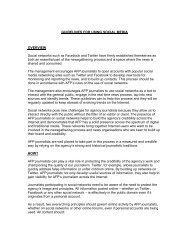
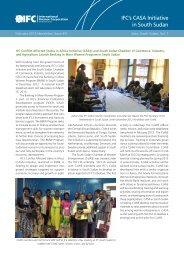

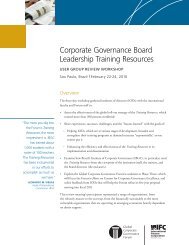


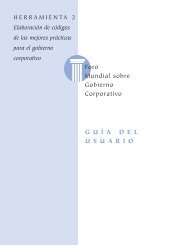

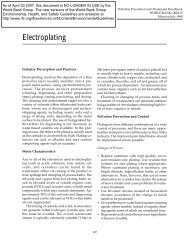
![Print a two-page fact sheet on this project [PDF] - IFC](https://img.yumpu.com/43449799/1/190x245/print-a-two-page-fact-sheet-on-this-project-pdf-ifc.jpg?quality=85)


